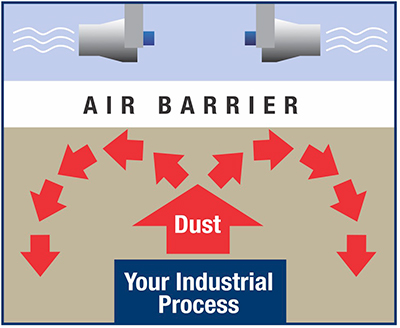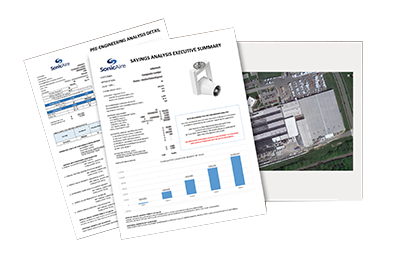Webster defines cost as “an amount that has to be paid or spent.” This concise definition describes a simple transaction. I pay x for y. But when it comes to combustible dust, the cost isn’t this straightforward. To count the true cost, we have to dig a little deeper.Immersed in a world of business transactions, it can be easy to focus on the up-front cost of maintenance and safety measures regarding combustible dust. Facility managers consider the cost of cleaning services and maintenance equipment. The costs that are less straightforward can get lost in the dust, so to speak.If we zoom out and take a more comprehensive look at combustible dust, we see that the true cost can be far greater than that of proactive measures to control combustible dust issues.
Monetary Cost
OSHA standards address combustible dust hazards, setting guidelines for safe work environments. Facilities must adhere to OSHA regulations to avoid hefty fines. Some of these regulations are industry specific, while others are general practices. Many states have state-wide occupational and safety programs that address these standards.
According to the Solicitor of Labor, Federal OSHA conducted 476 inspections in 2017 related to combustible dust. These inspections resulted in 319 citations or 67% of the inspections producing citations.
=
Fines/Penalties
+
Lost Production
+
Injuries/Lives Lost
Over the past several years, companies have discovered just how severe these citations can be. In 2014, OSHA inspected a lumber manufacturer in Georgia and discovered a build-up of combustible dust and repeat violations. The company was fined $279,400. That same year, OSHA fined a processing and packaging company $254,000 for “exposing workers to combustible dust.”
Not all fines have been this high. In 2018, a metal tank manufacturer was fined “only” $101,800 for dust accumulation. Still others have been much higher. A grain processing facility in Cambria, Wisconsin, suffered a dust explosion in 2017 that resulted in $1.8 million in OSHA fines.
Production Cost = Production Lost
While costly, fines aren’t always the worst consequence of combustible dust. If appropriate steps are not taken to control the dust, a facility may experience a combustible dust explosion or fire.
These events can shut down production for a few hours, a few days, or forever. With each passing minute of downtime, valuable production time is lost. Even minor incidents can cause damage that requires significant downtime for repairs.
Consider the math. If your facility makes 600 units per hour at an average selling price of $50 each, your company loses $30,000 in revenue for every hour of downtime. The greater the scale of production, the greater the loss. For example, the average automotive manufacturing plant loses more than $20K per minute of downtime.
While proactive measures to control combustible dust may require a degree of lost production up front, this cost is small compared to that of recovery from a combustible dust explosion.
Ultimate Cost
Lost production is expensive but examining this cost still doesn’t cover the full impact of combustible dust. Too often, when facilities experience a combustible dust event, people are injured and lives may be lost.
The Chemical Safety and Hazard Investigation Board (CSB) reports 66 fatalities and 337 injuries due to combustible dust incidents occurred in the U.S. between 2006 and 2017. In 2017 alone, 237 combustible dust explosions and fires around the globe injured 163 and killed 13.
While awareness of the dangers of combustible dust has grown in recent years, these incidents continue. In September of 2019, a dust explosion at a cosmetics plant in New Jersey left a worker seriously injured, another dust incident at a spice manufacturer in the Netherlands injured three, and a dust explosion at a German woodworking facility injured one employee.
It may be possible to put a price tag on the medical bills, worker’s compensation and building repairs that stem from these events, but the ultimate cost – life – is invaluable.
Avoid the Cost
Fortunately, the true cost of combustible dust – from fines, to decreased production, to loss of life – is avoidable. A proactive solution is available.
SonicAire industrial dust control fans are an effective approach to eliminate combustible dust build-up and mitigate the risk of combustible dust events.

The result: a cleaner, safer work environment that meets OSHA standards and potentially saves lives. The cost: minimal, compared to the cost of combustible dust.
The SonicAire Solution
SonicAire is a global leader in combustible dust control. Our engineers work with each facility to develop a customized solution for optimal performance.
Our dedicated team can recommend the ideal fan system for your operations that will allow you to avoid the costs of combustible dust.
To equip your facility with leading industrial dust control fans, contact SonicAire for a personally engineered solution and quote.

